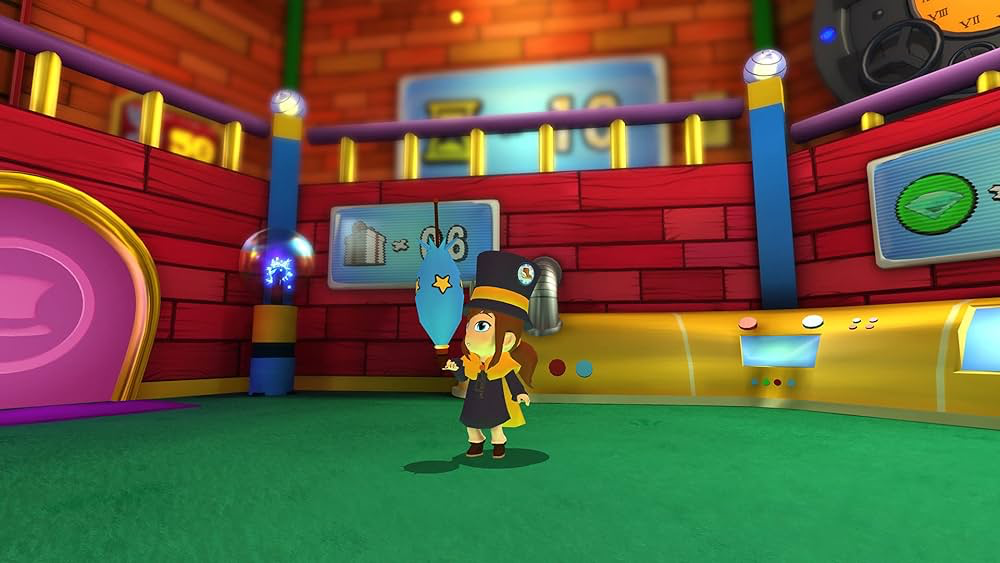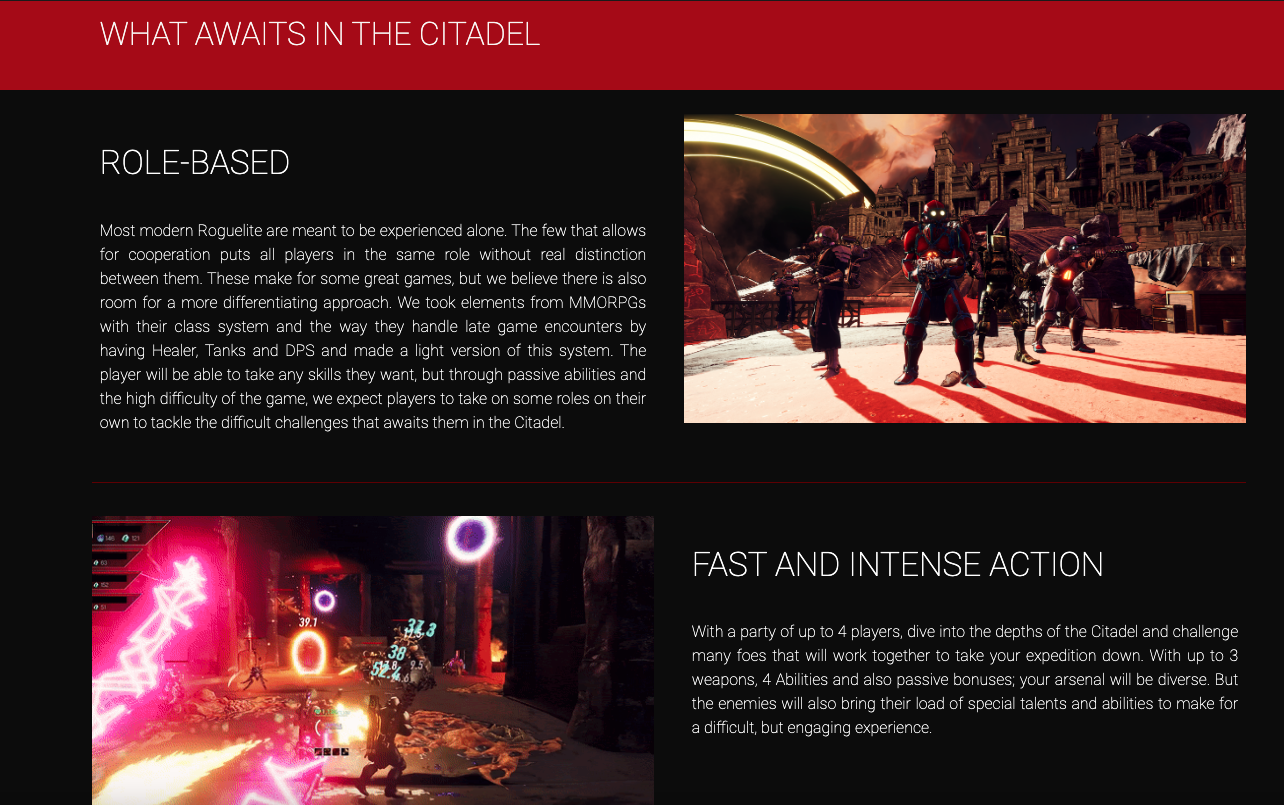Navigating the high-stakes world of game marketing can be a thrilling yet challenging journey for game developers. Every tweet, artwork, and character on your game's cover is a crucial decision that can either catapult sales or send them plummeting.
This is where GameRebellion steps in as your indispensable ally. We understand the rollercoaster of emotions that come with these monumental decisions in game marketing. Our mission is to transform your marketing doubts into daring strategies. We don't just offer insights; we craft game-changing marketing strategies tailored to your needs.
Let us guide you through the maze of game marketing strategies with the wisdom of years of experience and market trends. Together, we'll unlock your game's full potential, turning uncertainty into your greatest weapon for success.
Ready to take your game to the next level? Let's dive in!
Strategic Impact: Making Every Marketing Move Count
Marketing a video game isn't just about crafting messages; it's a complex game of 'what if' at every turn. The decisions range from defining the game’s visual appeal to choosing the gameplay perspective and identifying and engaging with the right community to drive sales.
Take the “A Hat in Time” case by Dead Bird Studio as a prime example. This indie 3D platformer masterfully targeted nostalgia, resonating with fans of classic 3D platform games. Dead Bird Studio meticulously studied and drew inspiration from beloved titles like Crash Bandicoot, Tomb Raider, Banjo-Kazooie, and Super Mario Sunshine.
However, they didn’t just emulate these games; they keenly observed their shortcomings and capitalized on them in game development and marketing strategies. The result? A creatively designed game that boasted engaging gameplay and substantial replay value.
The developers didn't just cast a wide net; they strategically targeted niche communities, creating buzz and gathering valuable feedback. This approach wasn’t just about selling a game but building a community and a brand.
Their efforts paid off spectacularly—"A Hat in Time" sold over 1 million copies in 2018 alone, earning numerous nominations for the best family game of the year. Today, thanks to its active and engaged player base, it is a vibrant, community-driven game with many player-created mods.
This success story underlines the importance of every decision in game marketing – it’s a mix of art, science, and a deep understanding of your audience.
 A Hat in Time - 2017
A Hat in Time - 2017
4 Key DOs for Effective Game Marketing
Embarking on a successful game marketing journey requires more than creativity; it demands a clear understanding of what truly works.
In the dynamic and competitive gaming industry, knowing the 'DOs' can make all the difference between a game that captivates audiences and fades into obscurity.
Let's dive into the four indispensable DOs of game marketing that will elevate your strategy and keep your audience engaged and growing.
1. Define your Target Audience
Before you start marketing your game, you need to define your target audience. Are you targeting casual gamers, hardcore gamers, or a niche audience?
Knowing your target audience will help tailor your marketing efforts to their interests and needs. Without planning a strategy surrounding your target audience, you cannot advance beyond your game’s development.
Of course, you cannot plan a strategy without knowing what kind of gamers you will target.
2. Use Social Media
To effectively reach and engage your target audience, it's crucial to identify and be present on their frequent platforms. Platforms like Twitter, Facebook, Instagram, and TikTok are vital for increasing your game's visibility and follower base.
Engaging with your audience on these platforms promotes your game and builds a community, fostering lasting connections and interest.
Understanding the unique dynamics of different social media platforms is crucial in reaching the right audience for your game. For instance, content that resonates on TikTok may not have the same impact on LinkedIn.
Pay close attention to your target audience's comments and content preferences; this will guide your decisions on where to focus your marketing efforts.
- Instagram, known for its emphasis on visual content, is perfect for showcasing game trailers and art styles. This platform can effectively attract visually driven gamers who might develop an interest in your game's aesthetics.
- Facebook and Discord are excellent for building communities. These platforms offer great opportunities to launch Kickstarter campaigns, gather feedback, and engage directly with gamers. This interaction not only aids in your game’s development but also makes players feel valued and integral to the process.
- Twitter excels in providing real-time engagement and updates. It’s the go-to platform for sharing live clips, promotions, and regular development updates, keeping your audience informed and engaged.
- TikTok and YouTube Shorts are ideal for reaching a broader audience beyond your niche. They thrive on viral content. Leverage TikTok’s strong music trends and hashtags to create catchy, short videos that can generate significant buzz around your game.
3. Build Relationships with Influencers
Influencers wield significant power in the gaming industry. They can amplify your game's reach and generate excitement among large audiences.
Platforms such as Twitch, YouTube, and Kick host millions of viewers daily, attracted by a diverse range of live streamers who each bring their unique brand and following. These influencers often seek collaborations with game developers, serving as brand ambassadors or partners.
By promoting your game to their followers, they can drive substantial traffic and interest. In return, you can offer compensation through various means like:
- Early access to the game allows influencers to offer exclusive previews to their followers.
- Game codes provide free access to your game for influencers to play and showcase.
- Customized merchandise, which influencers can use or give away to their audience.
- Creating unique merchandise based on specific game elements, offering a tangible connection between the game and its fans.
- Compensation is based on cost-per-mille (CPM), where payment is aligned with the number of views or impressions generated by the influencer's content.
Building relationships with influencers goes beyond simple promotion; it helps forge a strong reputation for your game, increase brand awareness, and garner respect within the gaming community.
This approach capitalizes on the influencer's credibility and reach, creating a mutually beneficial partnership that amplifies your game's market presence.
4. Create a Website for your Game
Your website is the primary showcase for your game, serving as a critical resource for information-hungry gamers. To ensure it captures the suitable attention, your website must be visually striking, intuitively navigable, and rich in content.
It should comprehensively detail your game, feature the latest development updates, and provide clear contact information. To maximize your website's reach, incorporate SEO best practices. Start by identifying and integrating relevant keywords associated with your game and genre.
These keywords should naturally align with what potential players might search for, such as game genre, gameplay features, or similar popular titles. Also, consider creating a blog section on your website.
This can be updated regularly with engaging content like behind-the-scenes development insights, interviews with the development team, and articles about the gaming industry. This content keeps your audience engaged and helps rank your website higher on search engines due to fresh, relevant content.
Remember to optimize your website for mobile users, as a significant portion of your audience will likely access your site via smartphones. Use the website for exclusive promotions, game releases, and limited-edition content. These offers not only drive traffic but also improve engagement and retention.

“The Last Citadel” website by indie developer Honest Demon poses an excellent example of optimizing their website for mobile users in a visual presentation while providing significant updates on their current project.
Four Critical DON'Ts in Game Marketing
Having outlined a strategic approach to game marketing, it's equally important to recognize the boundaries and responsibilities that come with it. The ability to influence an audience is a powerful tool, and with it comes the need for thoughtful, responsible action.
Remember, effective marketing isn't just about what you should do but also what you shouldn't. Here are the four essential DON'Ts to keep in mind while navigating the world of game marketing
1. Avoiding the One-Size-Fits-All Approach
It's a common misconception that you can cater to every gamer's taste. This approach, often adopted in-game marketing, can lead to a diluted product that fails to resonate deeply with any particular group.
As a game studio, you must recognize that not every game is for every player. When you try to appeal to a broad spectrum of gamers, you risk losing the essence of what makes your game unique.
This can decrease the overall quality of your content, promotions, and even the game's design elements as you attempt to accommodate a wide range of preferences. Such efforts might please a few but could disappoint your core audience.
This strategy can significantly affect your game's reviews, overall reputation, and sales performance. It's essential to focus confidently on your target audience and develop a marketing strategy that speaks directly to them.
By creating and referring to a detailed buyer persona, you ensure that your marketing efforts stay true to the audience you aim to attract and engage.
2. Ignoring the Power of Email Marketing for your Game
In the realm of game marketing, one critical mistake is underestimating the effectiveness of email marketing. While it might seem overshadowed by the flashier world of social media, email marketing offers a direct and personal way to connect with your audience.
Ignoring this tool can mean missing out on a significant opportunity to engage with players who have already shown interest in your game by visiting your website. Failing to utilize email marketing means not informing your potential customers about key developments, upcoming releases, or special promotions.
This oversight can lead to a communication gap, where your audience may miss out on essential announcements like pre-order availability. Moreover, not leveraging email marketing can deprive you of valuable insights.
For instance, tracking the response to email campaigns can help you gauge the expected pre-order volume, allowing for more accurate sales forecasts and targeted marketing strategies.
3. Neglecting the Importance of SEO
SEO is more than just a technicality; it's a strategic tool that enhances your game's online visibility. Ignoring it means you're not fully capitalizing on the potential to connect with your target audience through their online searches.
SEO involves tailoring your website's content, from the headlines to the timing and naming of your uploaded files, to align with what your audience is searching for online. This optimization is crucial because it ensures that your game appears prominently in search engine results, making it more accessible to potential players.
Failing to implement SEO effectively can result in your website and app store listings being buried under many other online content, making it difficult for potential customers to find your game.
To avoid this, use targeted keywords and meta descriptions that resonate with your audience's search habits. For example, experiment by typing a video game's name into Google and observing the recommended searches.
These suggestions reflect popular queries related to that game and can help you optimize your content to align with these trends.
4. Avoiding Overwhelming Your Followers with Content
It's vital to avoid overwhelming your followers with too much promotional content. While your audience has shown interest by subscribing or following your game, overloading them with frequent marketing messages can lead to disinterest or annoyance.
Focus on meaningful engagement with your audience. Provide your target with intriguing and relevant content, but leave room for anticipation and discovery. Creating an air of mystery around your game can keep players curious and excited about upcoming developments.
This approach builds a stronger, more positive relationship with your audience, keeping them interested and eager for more.
Finding a balance in the content you share is crucial to engage your audience effectively. One practical approach is to create a content calendar. This helps plan and evenly distribute your content over the months, ensuring your audience receives regular updates without feeling bombarded.
This calendar should not only space out your content but also diversify it. Mix in different types of posts, from sneak peeks and development updates to player spotlights and trivia.
This variety keeps your audience engaged and looking forward to your next update while maintaining a sense of excitement and anticipation for your game.
Launching Your Game into the Spotlight
Now is the moment to take the reins and strategize your path to success. This is your opportunity to transform your game from a hidden gem into a celebrated success story.
Imagine the day when your game is not just another title in the market but a benchmark of excellence showcased on our blog as a stellar example of successful game marketing. Envision your game igniting the gaming world, driven by a marketing strategy that resonates with your audience.
It's more than just promotion; it's about creating a legacy. We're excited to see where your journey takes you and are here to support you every step of the way. Keep an eye out here for ongoing insights and strategies to refine your approach to game marketing further!








